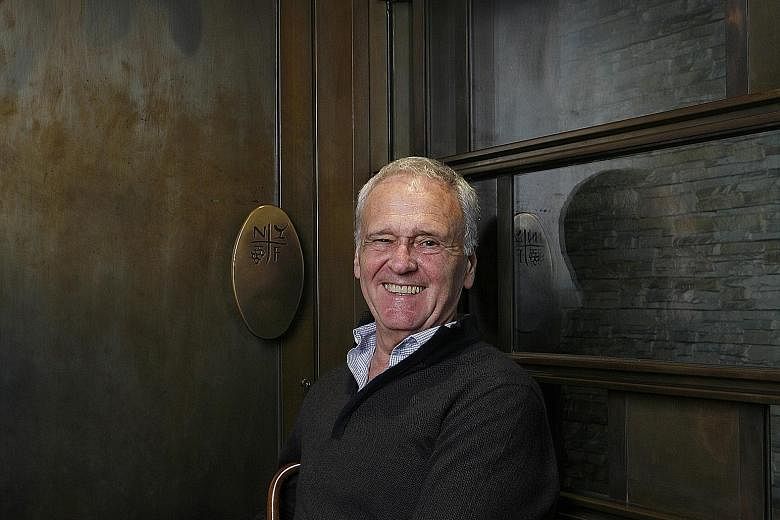Unlike wine, which develops more flavour as it ages, prosecco, the Italian sparkling wine, is normally drunk young, within a few years of bottling.
Yet, Mr Primo Franco, 67, the third-generation Italian owner of the Nino Franco winery in Valdobbiadene in Veneto, Italy, showcases back vintages of his prosecco to consumers.
There is some sediment left in the wine, unlike the clear and fresh sparkling prosecco that is popular today. The flavours, however, are not inferior.
In town recently for a private event, he highlighted vintages that date back to 1997 and 1992.
Other vertical tastings he has conducted overseas have featured eight vintages from 2013 right down to a 1983 vintage, which he calls the "father of all proseccos".
Ask him about each vintage and he can recall the season by heart.
For example, he remembers that 1997 was a "bad season" because of rain and cold weather, while 2003 had the "hottest summer of the century".
In particular, last year was a year to "remember to forget", he says solemnly. "It was very hard. It was rainy, cold and there was hail. We had only a few days of sun."
The bad weather led to concerns over a shortage of prosecco.
However, the savvy businessman adds: "It could also be the mistake of marketing people who signed too many contracts and sold too much wine before the harvest. We always know how much wine we have before we sell anything."
And with the years of experience he has chalked up since joining his grandfather's winery in 1973, he is unfazed by the competition from new prosecco producers, who also age their sparkling wine.
After all, Mr Franco is widely known as the man who took prosecco out of Italy and to many English-speaking countries.
The 2.4ha winery, founded in 1919, is considered one of the oldest wineries in the region.
In 1979, Mr Franco made his first trip to the United States, where he started to work with wine buyers and restaurateurs.
A year after his father died from a stroke, he released his first Primo Franco vintage.
Now, the winery has an annual production of 100,000 cases of prosecco.
His wife Annalisa, 64, manages their restored 18th-century villa, which operates as a bed and breakfast from March to November.
His younger daughter Silvia, 32, is the chief executive of the winery and handles the American market, the biggest market for them. His elder daughter Martha, 35, works in a fashion company.
Without Silvia in the business, he admits that he might have sold the company.
"The nice thing about the family business is to have a generation ahead of you," he adds.
He counts Singapore as one of his biggest markets in Asia, even "more important" than Japan, as he considers the Japanese to be champagne drinkers.
He is re-entering the markets in Turkey and Australia and is looking to expand into South Korea and Thailand.
Asked about comparisons between prosecco and champagne, he says: "We export a lifestyle. Prosecco for us is an everyday wine. You don't drink prosecco to celebrate, but you drink champagne for celebrations. It's a different attitude."
And on how restaurants might choose to stock champagne over prosecco because of higher profit margins, he laughs heartily and says: "Champagne is the money maker, but I would say prosecco is the cash cow."
- Nino Franco's proseccos are sold at ewineasia.com


